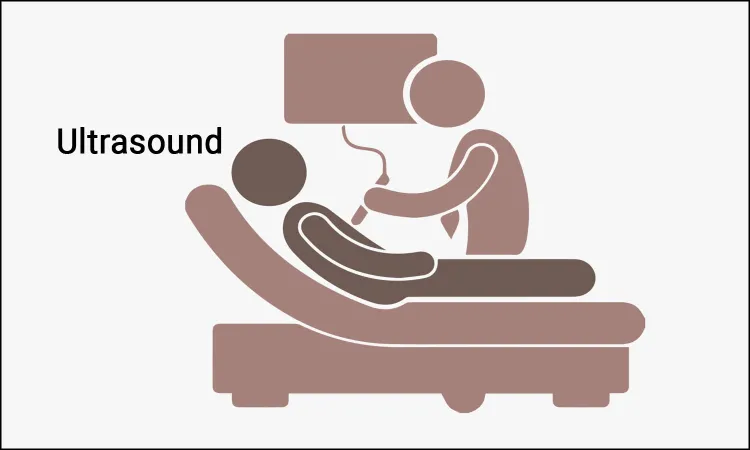- Home
- Medical news & Guidelines
- Anesthesiology
- Cardiology and CTVS
- Critical Care
- Dentistry
- Dermatology
- Diabetes and Endocrinology
- ENT
- Gastroenterology
- Medicine
- Nephrology
- Neurology
- Obstretics-Gynaecology
- Oncology
- Ophthalmology
- Orthopaedics
- Pediatrics-Neonatology
- Psychiatry
- Pulmonology
- Radiology
- Surgery
- Urology
- Laboratory Medicine
- Diet
- Nursing
- Paramedical
- Physiotherapy
- Health news
- Fact Check
- Bone Health Fact Check
- Brain Health Fact Check
- Cancer Related Fact Check
- Child Care Fact Check
- Dental and oral health fact check
- Diabetes and metabolic health fact check
- Diet and Nutrition Fact Check
- Eye and ENT Care Fact Check
- Fitness fact check
- Gut health fact check
- Heart health fact check
- Kidney health fact check
- Medical education fact check
- Men's health fact check
- Respiratory fact check
- Skin and hair care fact check
- Vaccine and Immunization fact check
- Women's health fact check
- AYUSH
- State News
- Andaman and Nicobar Islands
- Andhra Pradesh
- Arunachal Pradesh
- Assam
- Bihar
- Chandigarh
- Chattisgarh
- Dadra and Nagar Haveli
- Daman and Diu
- Delhi
- Goa
- Gujarat
- Haryana
- Himachal Pradesh
- Jammu & Kashmir
- Jharkhand
- Karnataka
- Kerala
- Ladakh
- Lakshadweep
- Madhya Pradesh
- Maharashtra
- Manipur
- Meghalaya
- Mizoram
- Nagaland
- Odisha
- Puducherry
- Punjab
- Rajasthan
- Sikkim
- Tamil Nadu
- Telangana
- Tripura
- Uttar Pradesh
- Uttrakhand
- West Bengal
- Medical Education
- Industry
An innovation: Matrix imaging improves ultrasound resolution

Ultrasound is a flexible and powerful medical imaging tool. In conventional ultrasounds, variations in soft tissue structure distort ultrasound wavefronts. They blur the image and can hence prove detrimental to medical diagnosis.
Researchers at the Institut Langevin (CNRS/ESPCI Paris-PSL)* have developed a new non-invasive ultrasound method that avoids such aberrations. In an article published in the journal PNAS** on 10 June 2020, the scientists showed how this method can subtly compensate for the distortions that a focused wave undergoes as it travels through the studied tissue, with an ideal resolution and contrast optimized for each pixel in the image. This approach can be extended to any type of wave, and can be controlled by a multi-sensor network. Applications range from biomedical diagnosis to optical microscopy, detection of cracks in industrial materials, and the monitoring of volcanoes and fault zones in geophysics.
This imaging method, known as matrix imaging, was also the subject of an article published recently in the journal Physical Review X***, as it can also help develop new approaches to imaging. This research was funded by an ERC Consolidator grant (no. 819261) as part of the European Union's Horizon 2020 Programme for Research and Innovation, and led to the filing of a patent by the CNRS, published in February 2020 (WO2020016250A1).
This process is particularly efficient in random scattering media, where traditional approaches such as adaptive focusing fail. Here, we first present an experimental proof of concept on a tissue-mimicking phantom and then, apply the method to in vivo imaging of human soft tissues. While introduced here in the context of acoustics, this approach can also be extended to optical microscopy, radar, or seismic imaging.
The noninvasive reflection method accesses a transmission matrix, which connects any point inside the medium with a sensor array outside. This matrix is the holy grail for imaging and it is shown that it enables in vivo imaging with close-to-ideal resolution and contrast at every pixel.
Hina Zahid Joined Medical Dialogue in 2017 with a passion to work as a Reporter. She coordinates with various national and international journals and association and covers all the stories related to Medical guidelines, Medical Journals, rare medical surgeries as well as all the updates in the medical field. Email: editorial@medicaldialogues.in. Contact no. 011-43720751
Dr Kamal Kant Kohli-MBBS, DTCD- a chest specialist with more than 30 years of practice and a flair for writing clinical articles, Dr Kamal Kant Kohli joined Medical Dialogues as a Chief Editor of Medical News. Besides writing articles, as an editor, he proofreads and verifies all the medical content published on Medical Dialogues including those coming from journals, studies,medical conferences,guidelines etc. Email: drkohli@medicaldialogues.in. Contact no. 011-43720751


